
Part XX
2014 ended with a to-do list. Some of it was maintenance, some was improvement. Realistically, the starting point had to be maintenance. There is no point advancing the pace again if the car cannot cope with the pace it can already generate. In this regard we’re encountering one of the great unspoken secrets of racing. It’s not so much that going faster is all that hard, it’s surviving it, and to squeeze that extra one mph out of the car has all kinds of hidden costs.
Lessons from last year included the seat being inadequate. Fine for a 240bhp car on road tyres, no use if you top 300bhp and add grip, it didn’t support the driver, and I was hanging onto the wheel. Pulling at the controls exhausts the pilot, and reduces the control available. Fatigue was not an issue at the time, the penalty was being paid the day after in sore muscle, but addressing it was clearly necessary.
My belts are also out of date for 2015, and any halfwit has seen in advance that HANS is on the verge of becoming mandatory. Might as well get out in front of that now, and buy the full kit together, so that seat, belts, and HANS all work together. It means a new helmet too. It’s a big bill, and the trip to Demon Tweeks in person is a ballache, but it means we won’t have the problem of buying one item and discovering that it doesn’t interact with another.
It also means we got to try on every seat in the shop until I found one that fitted, and gave the right sort of support in the right places. Amazingly, so many of them do not. We believe the there will be speed in the improved interface between driver and car. Arse-feel, if you will.
Installing a new seat is rarely as simple as just bolting it in. The move from a base-mounted seat with runners to a side-mount that won’t have any means a lot of messing about re-drilling holes. In the process I shifted the seat forward a little, to get a bit more muscle to the steering wheel and edge the clutch pedal that bit closer, but increased the layback on the seat a little to help with the odd HANS-induced sensation of being pushed off the back of the seat. It hasn’t improved helmet-to-cage clearance any, sadly. Movement with the HANS on is not restricted, but does feel more deliberate. It’s the noise of the tethers slithering through as you move your head, makes you feel like a kid pretending to be a robot.
move.
HANS requires you to be a little more careful about your belts too. Looping them round the cage is fine and all, but they do have a habit of slipping laterally, and they have to stay within certain tolerances. Setting them to the right angle in the workshop, and then the simple expedient of adding a couple of strips of self-adhesive foam to the cage stops the belts sliding. There is no need to get complicated, but there is also no sense paying for HANS if you’re not going to get the benefit because your belts were in the wrong spot.
Basic maintenance also meant a new extinguisher, my existing unit well out of date in every possible interpretation of both service date and bottle life. Whoops. Naturally the new extinguisher did not fit the old bracket. Well, why would a manufacturer use a standard size when replacing their own product?
Next up, the less than stellar hot oil pressure. Not low, but not as high as we’d hope. Bigger oil cooler, or is this more fundamental, like the oil pump? It hasn’t deteriorated with engine use, it was like this from the first day of running. Doesn’t mean the pump was great to begin with. A smart man would pull the engine and swap it. We’re smart. Sort of. Engine out. The box is coming off anyway, so why not
Engine inverted, pump swapped. Whilst we’re upside down, the issue of the oil leak from Brands. The cam cover holes are therefore helicoiled to give us some actual thread, and new top hat seals fitted. You can’t keep missing half of quali with oil leaks. The engine gains an additional breather whilst we’re here, for the fun of it.
The head gasket munching issue from Silverstone last year is addressed in more conservative fashion, by simply “lifing” the gasket, until the more permanent solution is machined into the second head, but that is a longer-term fix. For now we simply avoid road use and keep note of the miles covered.
Gearbox swapped. The oil that came out was very dark for its age, and there was a lot of far too-large debris on the drain plug. Our conclusion that it was dying appears correct. The replacement is another standard box, again whilst an improved solution is found, but once more with a price-tag applied. We appear to be at the tipping point between “could just cope” and “can’t quite cope” with the equipment we were running. You can’t blame the gearboxes, each one is 25+ years old, and is now thrashing along at internal speeds it’s never before had to consider. Full synthetic oil now replaces the ATF we have used for so long.
Clutch has no issues. The flywheel teeth look a bit worn already, the answer there lies in a starter that has eaten its bush. Bow chicka bow wow. Off for repair for that then.
Reassemble, and chuck it all back in the hole. It’s actually quite therapeutic, so much easier working on your own machinery with all the tweaks and techniques that evolve from doing this a couple of dozen times. Annoyingly, we’re running out of ways to make it faster or easier.
The rear hub failure deposited me in the grit at Brands. Damage was limited to rubber smears in the wheelarch and a hole punched in the boot floor, but it is to be avoided if possible. The answer is an engineering solution that is simply too expensive. The other alternative is the improved XKR hub, but hen’s teeth found in rocking-horse shit are more common than those. There is a third way, which is to buy brand new hubs.
Like the gearboxes, you have to consider the age of the parts we’re using. V8 hubs are 12-15 years old, X300 up to 20, XJ40 could be 25. Nothing goes forever. How many failures are actually caused by sheer age fatigue, rather than a single moment of stress? Well, we will find out, by fitting brand new hubs, and seeing if they break in the course of a single, full, season.
They are £115 each, plus the VAT. That’s expensive, but cheaper than the cost of sitting in the gravel. If you throw one away every year, but you never break another hub, you still come out ahead. Of course then the forking supplier couldn't actually supply them. Morons. Analysis of failed units suggests that they don’t just break in one single bite either, the initial fracture would probably be detectable if you pulled the hubs regularly as part of basic maintenance. The problem with that is the cost of the once-only hub nuts. It may be time to drill the driveshafts for castellated nuts and split pins.
Rear subframe dropped and dismantled to check the diff, reassembled and reinstalled. Just like that. A plan to improve location failed after a number of hours’ investment, but may later seed results. Design rarely seems to work first time.
Of course none of this happens in isolation in life. You can guarantee that as your deadline approaches and you have a nice, quiet, relaxed schedule planned out to complete it all, that will be when work goes mad and demands your late night attention. Could that GP practice not have kept the fridge switched on and therefore not caused 515 kids to be re-vaccinated, please? I mean, I like having work and all that, but did it have to be this week? Fitting work and racing into life does tend to mean little time is left over for, you know, life. And sleep. But grimly hammering away into the small hours has a certain satisfying masochistic determination about it. Commitment reaps rewards.
Next up, the brakes. I was learning to brake at Brands. Braking has been my weakest area for years, in fact I can tell you the race that caused me to turn into a big girl on the middle pedal, but at Brands I was starting to believe the car might stop. It’s all a learning curve, this transition into modified territory I think should always be slow, and I don’t regard this process as even halfway complete yet.
So, there you have it. A couple of weeks of evenings and weekends, what you would probably call a major service. In total I blew a month's salary on kit and a car many would say is already fast enough. It might have been, but only briefly. This ought to make it swifter, and safer, for longer. Consolidate what you have before you make another jump. Many could learn from this approach.
Many who are prepared to spend this sort of money would have spent it on camshafts, but in my never-humble estimation, they would have been wrong to do so. I have seen too many people show up with massive, expensive, extensive modifications to their car aimed at a quantum leap in performance, and then fail miserably when not only does that not work, but the rest of the car breaks in the process.
I think that a slow process of inexorable changes is the way forward. A small jump in performance, then consolidate it by letting everything catch up to allow you to survive the new capabilities. Then do it again. When the car can stand what it is currently being asked to do, then we will think about more power, but not until.That’s my theory. Does it work? We’ll find out at Silverstone next week.
In trying to stop later, we found flaws in the brakes. The EBC pad could not cope with what we were asking, so a move to something much more expensive, both ends, if we can get it. The hydraulic system itself was getting too hot. Fixing this means re-routing some brake lines, adding heat shields, and venting the bonnet. I usually fit louvres, but instead this time we’re trying simple slots cut into the composite.
Vented rear discs for the first time, and V8 rear calipers, rather than X300 items. Salvaged and resealed calipers, naturally, no new stuff. I would go as far as a pedalbox at this stage, but it’s hard to match the mechanical advantage without a servo, and I’m not convinced by the various solutions yet proposed. No bias adjustment means the smaller piston rear calipers from the V8, they’re to hopefully avoid over-braking the rear. The vented discs should get the heat down. A little extra cooling ducting is also added.
Lastly, what of that accursed understeer? Well, a couple of small changes. Nothing major, actually, just a small tweak, see if it helps at all. If so, that’s the direction to go further with.
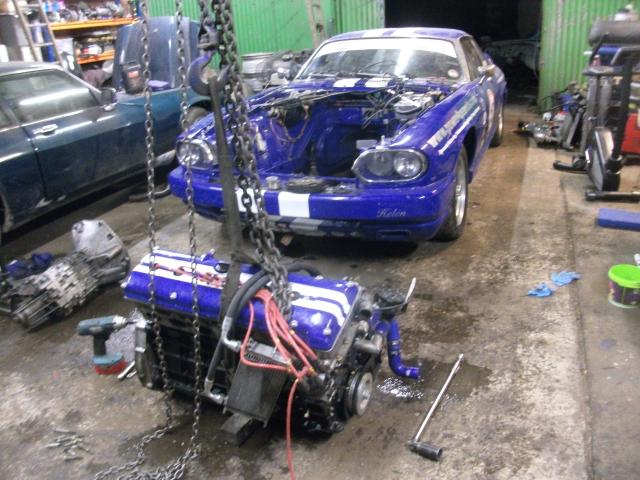
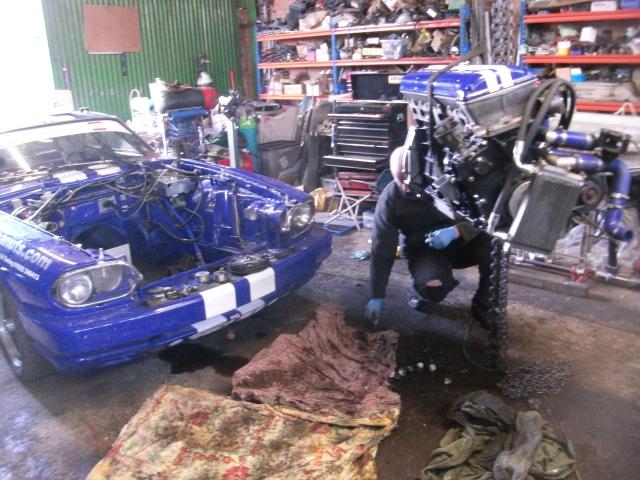
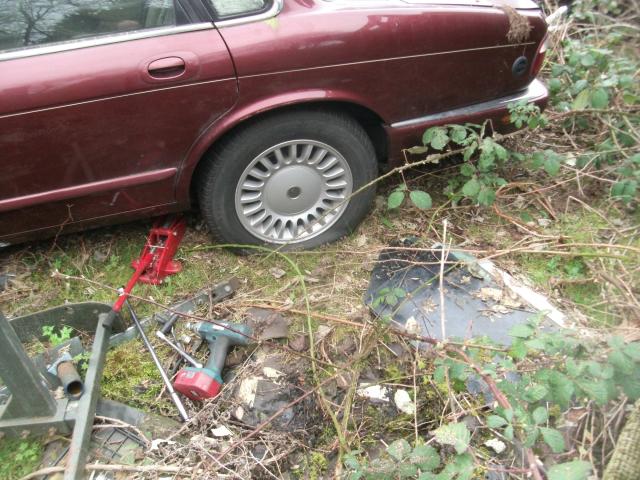
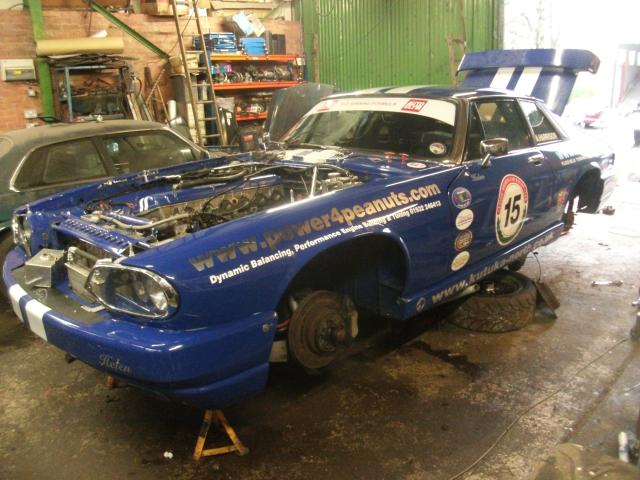
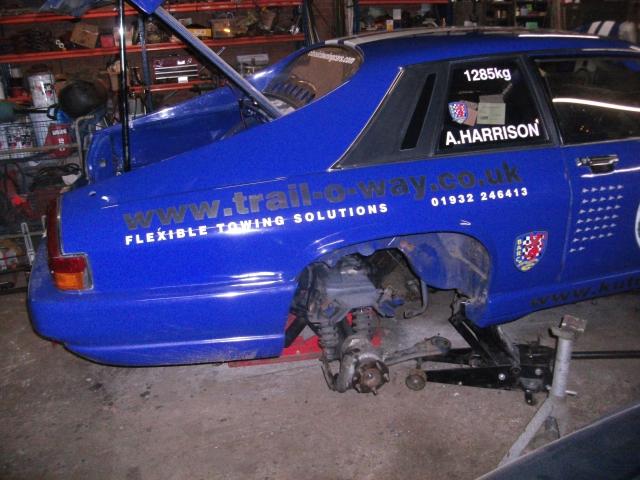
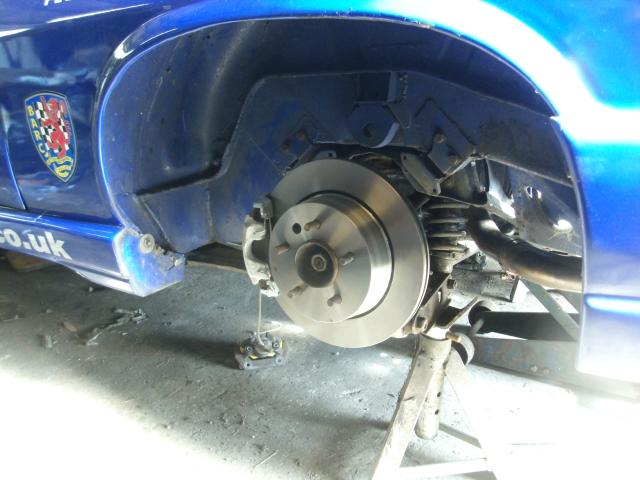
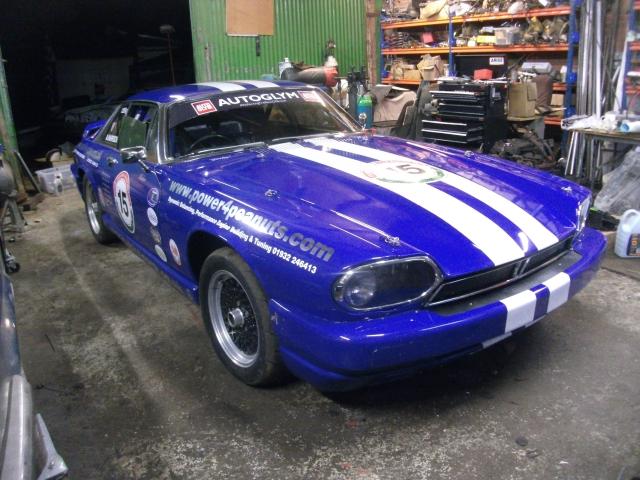
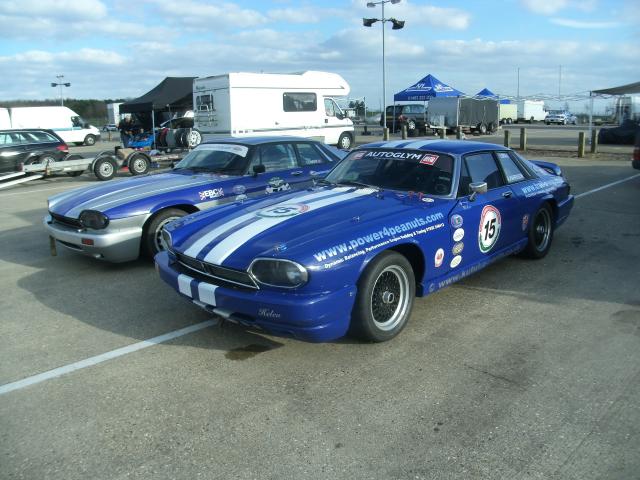
You can just whistle, and this jumps straight out now. After a winter of road cars, this was a joy to work on.
There may have been a slight spillage incident caused by a holed drip tray. Oops.
Rear subframe was removed, dismantled, and the diff internals inspected, just to be sure. The diff was fine, but I found other niggles. Which is why we do it.
In the traditional pre-race stance, no wheels and many parts removed. Yes, that is still a steel bootlid.
Kneeling in brambles to salvage V8 calipers is not the most glamorous aspect of motorsport. But it is cheap.
The vented rear discs are something I bought in 2010 and never needed. I can't claim this to be forward planning, I forgot I had them. Bear knew. Bears are handy.
Silverstone ho! What did you call me?
And we're calling that ready. 2 whole days before we have to depart for Silverstone. A new record.